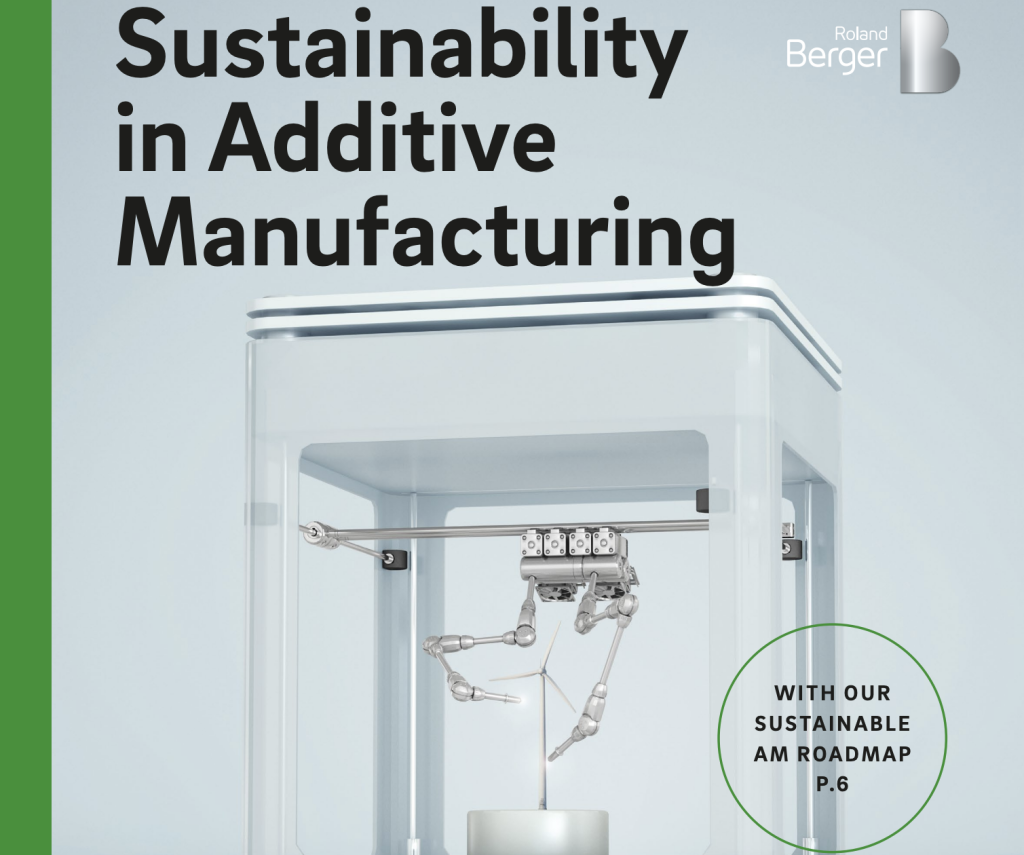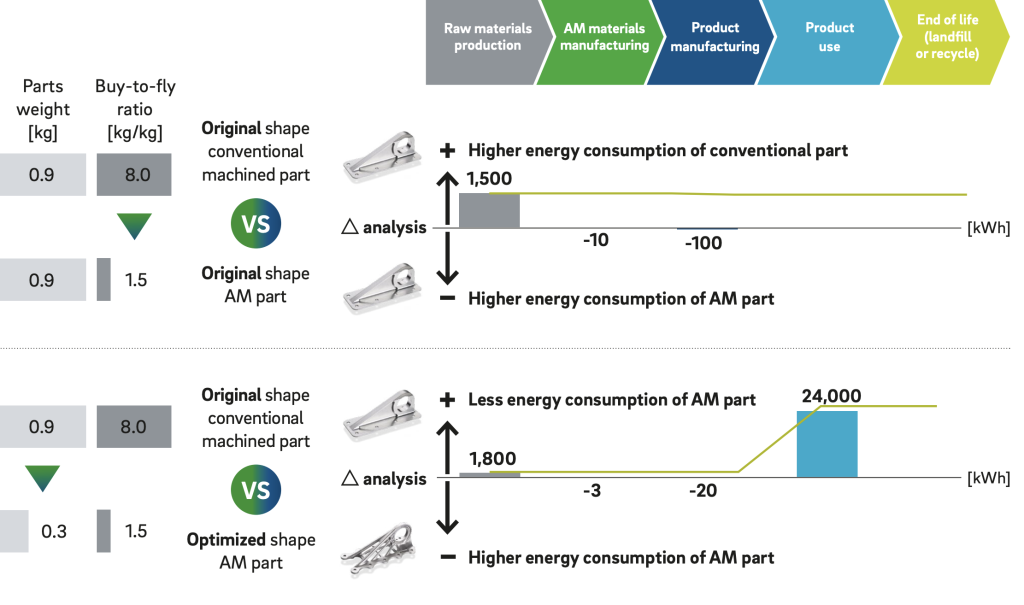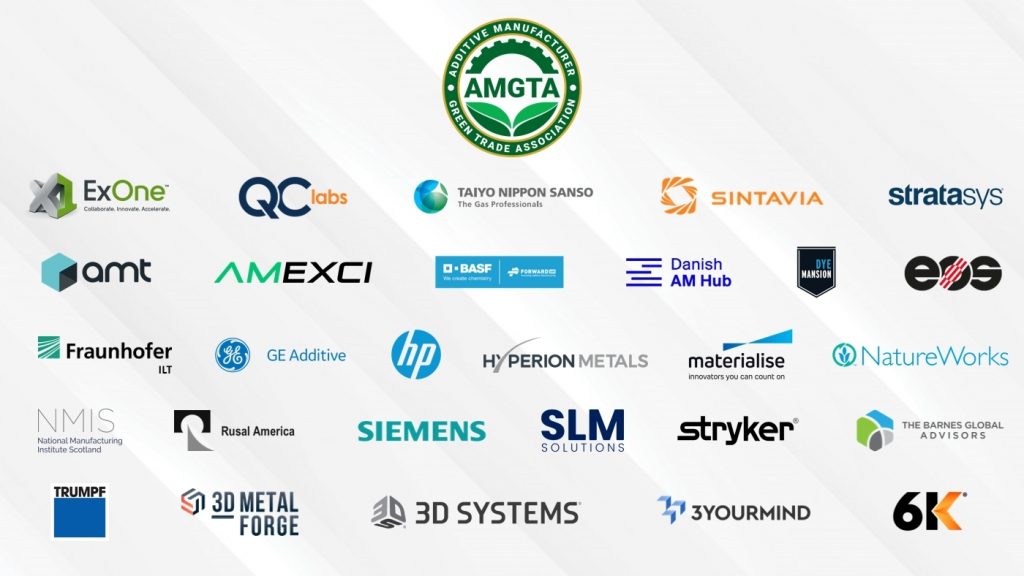International management consultancy firm Roland Berger has called for sweeping changes across 3D printing to turn the sector’s “superficial” and potentially “misleading” sustainability benefits into reality.
In a paper titled ‘Sustainable Additive Manufacturing,’ Roland Berger claims that the technology is more than capable of delivering on its much-touted eco-friendliness, but it must first become “more transparent.” The company’s assertions are based on research, which has shown that prior to entering production, 3D printed parts have a larger carbon footprint than traditionally-manufactured counterparts.
To address these results, Roland Berger has highlighted the need for more life cycle assessments (LCAs), so that the industry is able to create a ‘baseline’ from which it can deliver, and issued a roadmap designed to help realize 3D printing’s potential.
When contacted for a response to these findings, Erik de Zeeuw, Materialise’s Market Manager for Certified Manufacturing, revealed that the firm was actually consulted on the project. What’s more, while de Zeeuw highlighted the inconclusive nature of the research, he didn’t opt to challenge its outcomes, and instead called for more “focus and investment” into making material production sustainable.
“Additive manufacturing companies need to be mindful about the use of valuable resources and develop innovative technologies to reduce our impact – from reducing scrap rates and increasing the usage of recycled powder,” explained de Zeeuw. “This includes more focus on better understanding the printing process and increasing our ability to control and optimize it.”

Roland Berger’s 3D printing report
At first glance, Roland Berger says that 3D printing offers greater material efficiency than subtractive processes, making it the “perfect technology for responsible manufacturing.” Yet, upon closer inspection, the consultancy firm claims that additive manufacturing “falls short of this lofty ambition,” as it often requires the use of thermally or chemically-treated materials, raising the amount of energy it uses.
Roland Berger also points out that during metal 3D printing, materials often need to be sieved to enable them to retain an optimal particle size distribution, resulting in “large amounts of scrap powder,” while some methods still bring long lead times.
Due to these factors, as well as the lengthy post-processing needed by certain end-use parts, the firm’s Tim Femmer claims that at face value, 3D printing’s pre-production phase energy consumption may even give it a “larger environmental footprint.” That being said, the Project Manager adds that the amount of material saved via it being an additive process, “more than makes up for” these shortfalls.
Additionally, by enabling part consolidation at the design stage, Femmer says that additive manufacturing can deliver weight and performance advantages that are impossible to achieve via traditional methods. Using an aerospace bracket as an example, the engineer explains in the paper, that switching from milling to LPBF 3D printing the part, allows it to be made with a reduced mass of up to 65%.
Again, in response to Femmer’s “larger environmental footprint” claims, de Zeeuw doesn’t dispute his findings, but does highlight that this isn’t always the case.
“While uncertainty remains, there are examples to demonstrate that a part produced using AM doesn’t necessarily start with a larger environmental footprint,” says de Zeeuw. “Small series production with injection molding, is likely to have a bigger impact in terms of the production set-up, And for the production of complex parts, 3D printing, in the case of DED, requires up to 75% less metal compared with incumbent forging and metal processes.”

Mapping a path to a greener AM
Based on its initial findings, Roland Berger has issued a roadmap for bringing greater clarity to the potential environmental benefits gained by switching to 3D printing. As a first step to achieving this, the firm recommends that material manufacturers estimate the amount of CO2 emitted during their production processes, and include the result in their products’ technical parameters.
If 3D printer developers were to follow suit by indicating the eco-friendliness of running their machines for set periods, Roland Berger argues that this would also allow users to estimate the energy and emission cost of each part, while along with further industry LCAs, helping them establish the technology’s sustainability.
Describing such LCAs as “important” to “better understanding 3D printing’s sustainability,” de Zeeuw adds that even Materialise, which runs “one of the largest 3D printing factories in the world,” currently lacks data on this. While admitting that compiling this information about 3D printing’s varied technologies is challenging, de Zeeuw highlights the particular need for research into the “footprint of feedstock.”
For its part, Roland Berger says the creation of a “quick and easy tool” capable of predicting the difference in the sustainability of 3D printed and traditionally produced parts is “essential” to driving the tech’s adoption, and highlights areas like powder recycling, inert gas consumption and build area optimization as also having a part to play.
Ultimately, de Zeeuw says that Materialise is taking a similar approach, and doesn’t consider the issue to be a question of whether 3D printing is sustainable, rather as a matter of “what we can do” to make it more so. Whether it be through the utilization of renewable energy, or the development of recyclable or plant-based materials, de Zeeuw believes Materialise is doing everything it can to make this possible.
Those interested in reading Roland Berger’s full Sustainable Additive Manufacturing report can do so via its Insights page.

3D printing’s sustainability drive
Despite Roland Berger’s relatively negative take on the environmental impact of adopting 3D printing, there are examples of initiatives across the industry that are working towards improving its sustainability. The Additive Manufacturer Green Trade Association continues to make strides in this area, and the organization unveiled plans to investigate the LCA of 3D printed aerospace parts late last year.
Materialise itself has also launched Bluesint PA12, a technology designed to enable 3D printing with up to 100% recycled powder. In practice, the process is able to achieve this by making use of two lasers, with one sintering a new layer, and the other maintaining a temperature that keeps the previous layer at the correct heat, reducing the ‘orange-peel’ effect that’s often observed when re-using powder.
Elsewhere, in construction-oriented developments, researchers at the Indian Institute of Technology Guwahati (IIT Guwahati) have even come up with a way of 3D printing industrial waste into sustainable structures. Leveraging a novel material which uses local waste as a binder, the team has been able to 3D print a unique piece of ‘urban furniture,’ while reducing their concrete consumption by 75%.
To stay up to date with the latest 3D printing news, don’t forget to subscribe to the 3D Printing Industry newsletter or follow us on Twitter or liking our page on Facebook.
For a deeper dive into additive manufacturing, you can now subscribe to our Youtube channel, featuring discussion, debriefs, and shots of 3D printing in-action.
Are you looking for a job in the additive manufacturing industry? Visit 3D Printing Jobs for a selection of roles in the industry.
Featured image shows the cover of Roland Berger’s Sustainable AM report. Image via Roland Berger.


